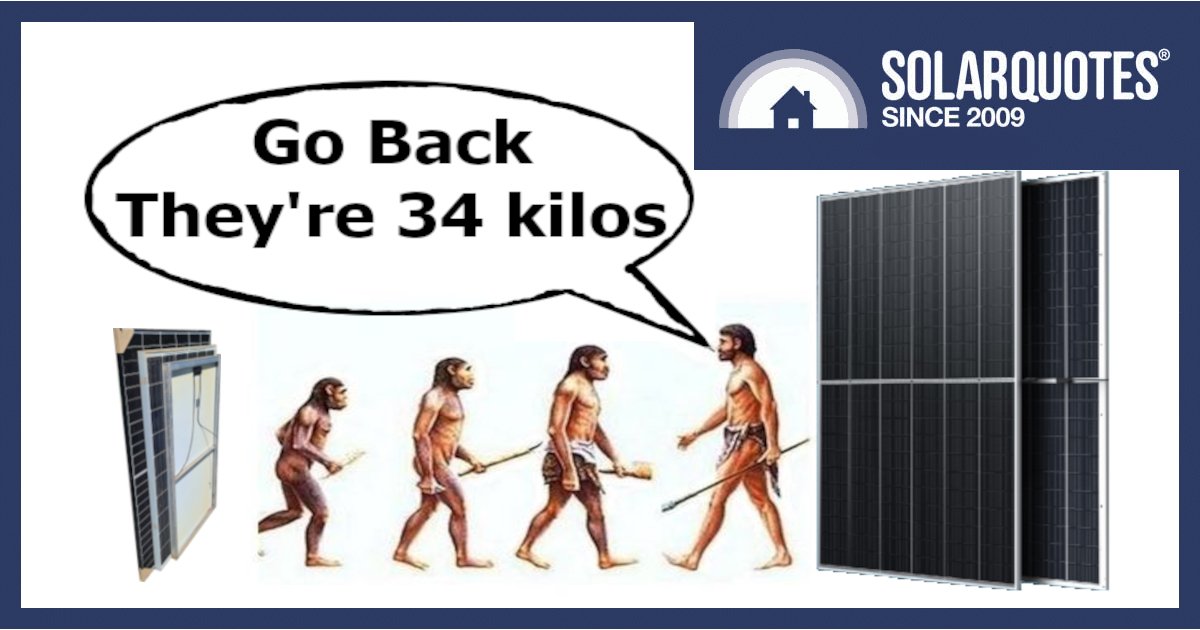
I don’t know about homo erectus but homo sapiens is being asked to lift a panel that’s 2.4 metres tall. These images aren’t much out of scale!
After what seems like days of research and consultation with hundreds of members of the Australian solar industry (more than I can sensibly count on my fingers anyway), I’ve come up with a wish-list of what installers want when it comes to the solar panels they are bolting to roofs:
- Manageable panel sizes
- Reasonable clamping zones
- Better cable management
- Sensible warranty periods
I always liked the 225W SunPower module. 15kg, 18% efficient (in 2008) with a 40mm deep frame, 1560 x 800 footprint and cables long enough so you had a choice: daisy chain or leapfrog wire them…
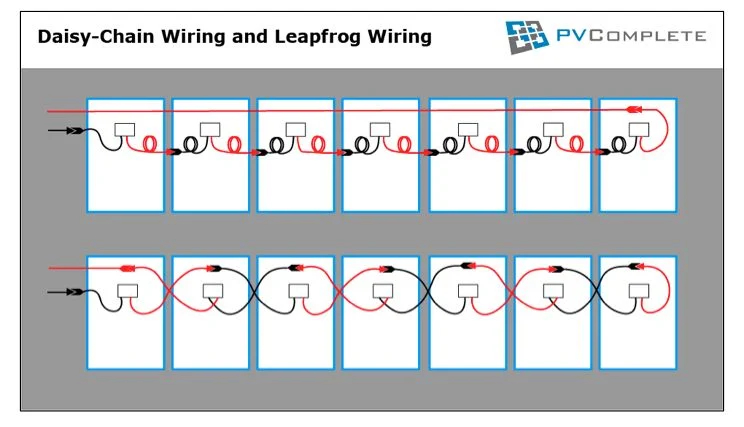
Image credit: PVComplete
…but that’s a fond memory of when my lower back wasn’t liable to complain. Oh, for the days when solar panels were $4.20 per watt plus tax and freight.
Manageable Solar Panel Sizes
Perhaps one day, a regulator will say: “Look, here is the ceiling for panel sizes humans can safely handle”.
But I’m not holding my breath. So I expect we will soon all need to buy a crane with a suction cup.
I’ve often left some of the newbie panel fixers, or indeed customers, agog on the ground by just grabbing a solar panel, sticking it in the crook of my arm, shuffling up a ladder and then striding across a 25-degree pitch roof. You need Rossi boots, a sense of balance and practice x 10,000.
However, as panels have grown, it’s become increasingly awkward. First, they grew from 800mm to 998mm in width, and damn, that made estimations of rail length easy. Then they got longer, and in any breeze, we found a 1 x 2 metre sail difficult to carry. The one saving grace of 2-metre solar panels was that it was easier to hand one up from the ground to your comrade on the roof, but there was a weight penalty to pay. No matter the size, we often slid them up a ladder.
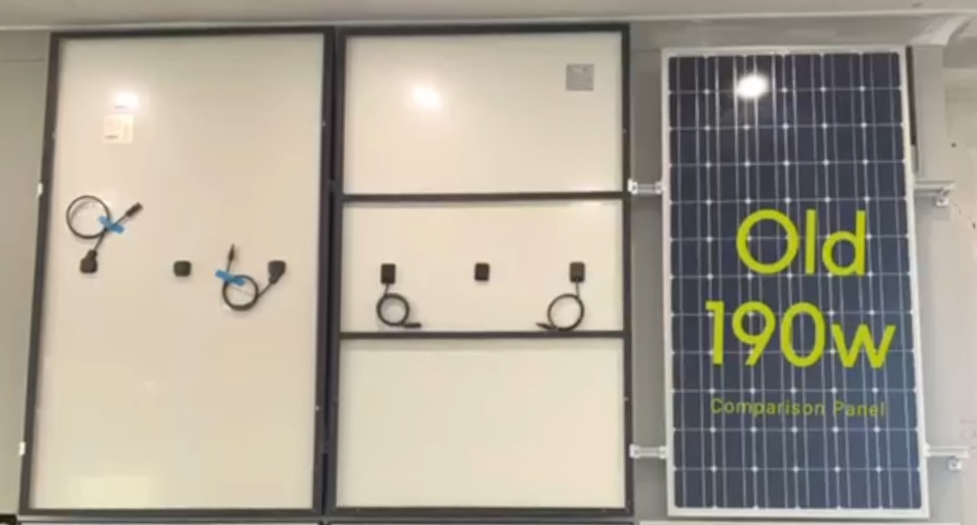
Longi 370w on the left, REC 385w with reinforcing bars in the middle, and an 800mm wide panel for comparison. Image credit Energyplex Gawler
The latest generation of panels has expanded to 1750 mm tall (or even 2200 mm!), but the real killer has been an extra 150mm width.
The Yingli 415 Watts I have just installed on the north face of my house are 1140mm, which means it’s gone from awkward to downright difficult. They put a lot of pressure on your neck, you have to duck under a garage door and worst of all, they are a pain to place on the frame accurately.
Not only does this mean you’re straining to get them into position, but you’re straining the panel itself when applying some torsion to walk them onto an earthing weeb or get them under the panel clamps. It’s not doing the workforce or the solar panels themselves any favours.
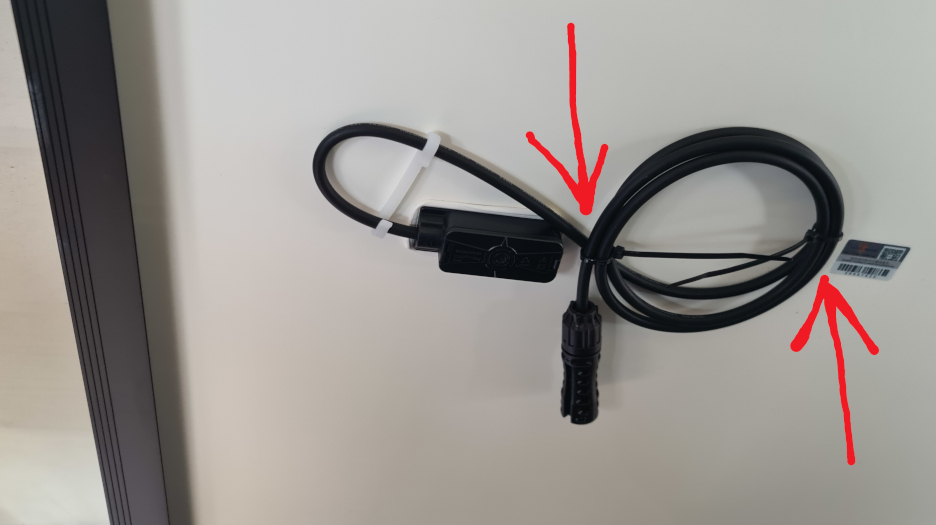
I am mystified about the purpose of the white clip on these Yingli panels, but I’m sure the black cable ties are simply there to waste time and risk cutting the cables when you remove them. Preparing solar panels for install is tedious enough when they use masking tape let alone this.
If anyone volunteers that the instructions on the box indicate two people must handle them, I’ll kindly ask them to show me how exactly you manage that. OH&S is increasingly stringent, and if you have two people in fall-restraint harnesses who can work as a close-coupled team without falling over each other’s ropes and do it with a modicum of speed and efficiency… I’d pay to watch it more than I would sportzball. Especially when we’re struggling to get enough labour to do the work.
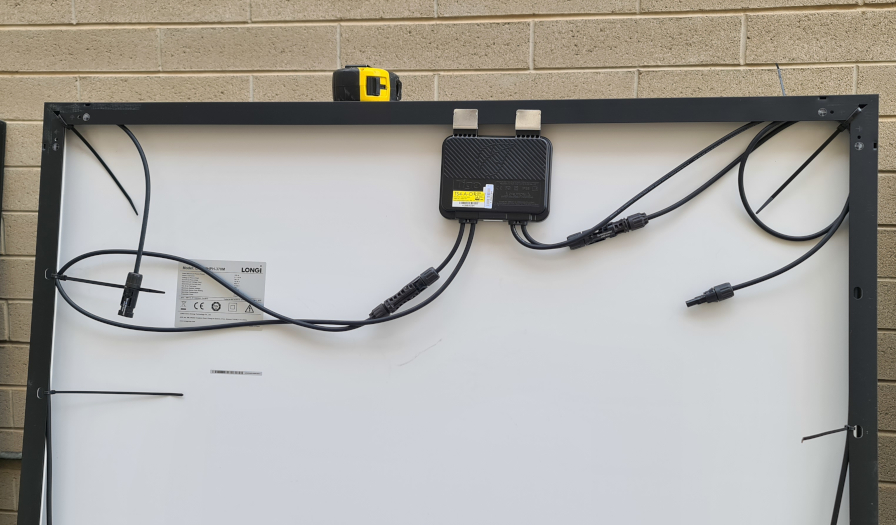
This Longi panel is a bit of a mess, but at least there is an edge to mount the Tigo optimiser onto. Many new models have deleted this lip which makes proper cable management and bird proofing impossible.
Why Are Solar Panels Getting So Big?
As it stands, the size of panels is largely driven by the size of the wafers. When Australia was a world-leading solar manufacturer, the panels were all hard-wired, and your electrician got to choose the panel voltage by installing links in the junction box. Now we get what we are given, and that’s increasingly becoming a pain. As the power of solar panels climbs, the current is going up, and voltages aren’t, making inverter compatibility more and more challenging.
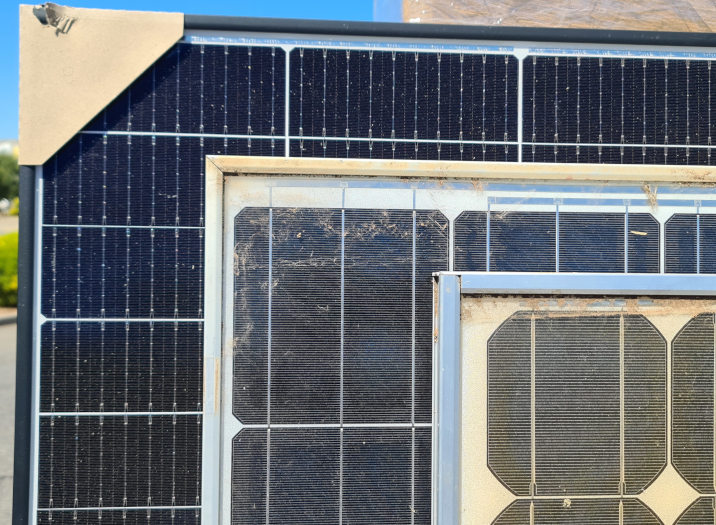
175 vs 260 vs 415 watts. The increases in wattage per panel aren’t just down to technical advances in cell manufacture, it’s as much that the gaps in between them are smaller.
The reason is with split cell designs and more strings of cells in parallel, modern solar panels are less susceptible to shade, and that’s great. However, it seems from an Australian perspective the panel makers aren’t talking to the inverter makers, which means the inverters we have to choose from have less and less design headroom in terms of current, while the legacy AS/NZS4777 inverter standard is hobbling us with a 600 volt DC limit on residential installs.
As I’ve detailed in a previous post, the current output of new solar panels is causing some conniptions. As an example, we’ll take the garden variety 6.6kWp Australian install. Using a 415 Watt / 37.4VOC / 14A ISC module, the 600V rule means you can’t put 16 in a single series string1 (shakes fist at AS4777), and many roofs aren’t big enough for that anyway. However, two strings of eight will be fine? Well, yes, except that at 31 nominal volts, the strings only amount to 248, which is low in the inverter operating window, making it inefficient.
If you have three roof planes and would like to parallel two strings for east and west orientations and use another string for a north array, 5 or 6 panel strings are even worse in voltage terms. In contrast, only the best string inverters can handle 28 amps from a parallel array. If your roof is more complex, then the only choice is more expensive microinverters, and those available on the market aren’t comfortable either.
My approach on the next tranche of my own house is to scrounge up some old stock panels (really because I’m cheap) with 48VOC / 10a ISC specifications, which is going to drive a Fronius Primo 6 up the wall with two strings of 11 or 12. It should be fun to do, so watch this space.
Forgive Me If I’m Repeating Myself
What else does the industry want? The largest proportion of my informal survey asked for solar panels 1650 x 992mm, less than 18kg, preferably with a 35 or 40mm frame depth. Now, the sceptic in me says that’s just the conservative nature of the building industry asking for what they’ve traditionally had, what they’re used to, a security blanket with a nice warm cup of milk.
The thing is I asked for some suggestions, idealistic or realistic, and the next most popular option was a format we’ve never really seen, 1483 x 983 equates to 1 x 1.5 metres, including a standard 17mm mid clamp. It would make life easy for the apprentice who’s mathematically challenged after a weekend on the turps and also offers some flexibility in arrangement on the roof.
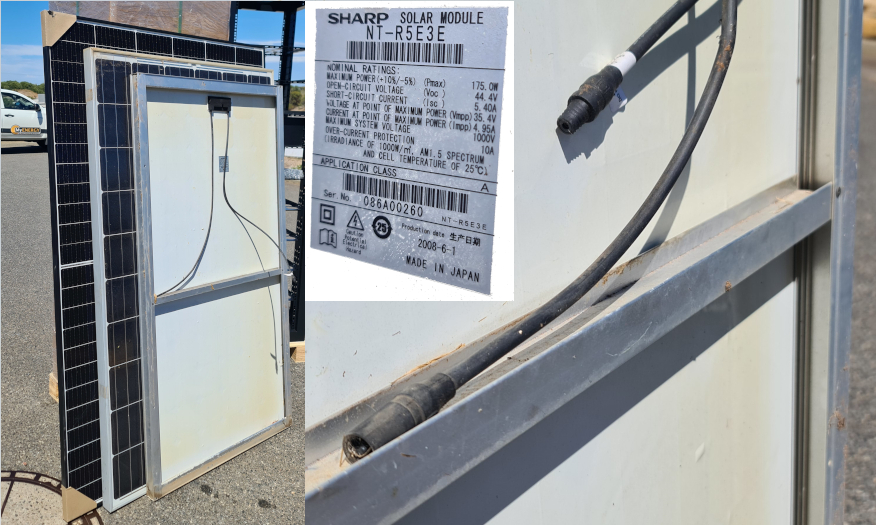
That middle panel is just right. Now if we could just have that reinforcing bar from 2008 as well…
When you look at the image above, it’s the middle-sized panel everyone2 wants. While bigger panels offer larger systems with fewer connections and less hardware, there comes a point where bigger isn’t better. The ideas for a moderate-sized solar panel accounted for 60% of the votes, and that’s not to be dismissed lightly.
Clamp Zones
Next up were broader clamp zones, which again are about making placement on the roof easier to manage with limited roof space and restricted rail positions/screw lines in the roof. Really it’s about having stronger frames, which is also reflected in the call for 40mm deep sections. As the panel makers have moved to 35mm and now 30mm frames, the panels feel flimsy in your hands, they make creaky, cracky noises that stab at the heart of any installer who’s watched a video like this one.
Of course, if your installer doesn’t care, his boss should because micro-cracks and accelerated degradation are something that warranties should cover. So it’s in EVERYBODY’S own interest; the manufacturer, the importer/wholesaler, the retailer and, of course, the dear customer to have stronger solar panels with better handling practices.
However, the reason behind ever thinner frames is cost. It’s not just aluminium, it’s as much about volume. You can get more panels in a pallet at 30mm panel width, but the width of shipping containers can’t be changed, they will only carry two pallets side by side. Add to this the headroom in a container means wider solar panels will make for taller pallets, which are better still at filling the available logistic space.
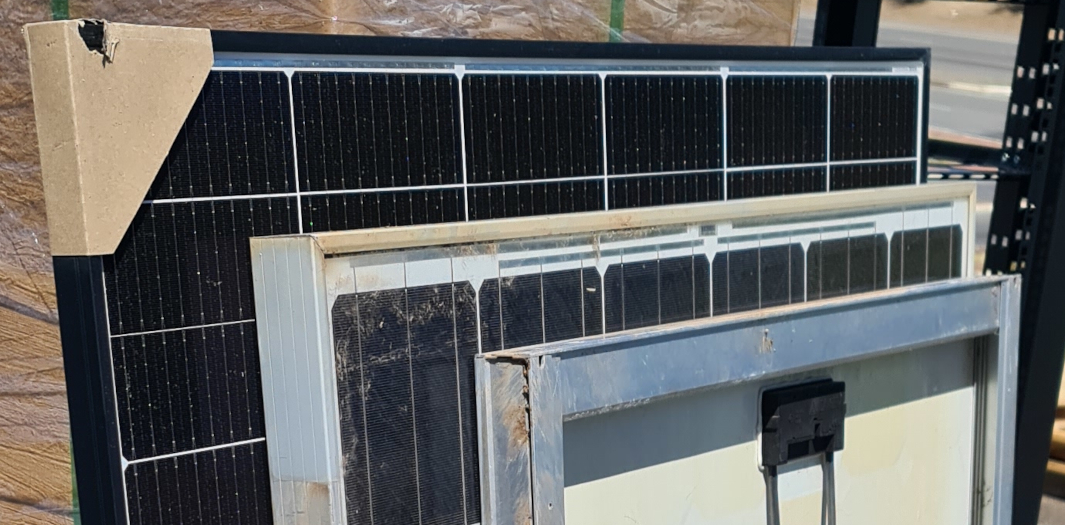
30 vs 40mm frames doesn’t sound like much but these are like chalk and cheese to handle. In fact by 11am the black frames were too hot to handle with bare hands.
Cable Management?
The only other significant response was for a fresh idea about cable management; making solar panel frames with a groove that will accept a cable being pushed into the edge. I’ve always been mystified about how cable management hasn’t been better organised in solar more broadly.
There have been rails made with cable duct if you’re willing to buy them, Solar Depot had a great solution with their bespoke framing. Still, beyond that, the rest of the industry is a mess of clips, ties, conduit, and catenary, which is undergirded by rules and workmanship (often sadly lacking) to get a nice result.
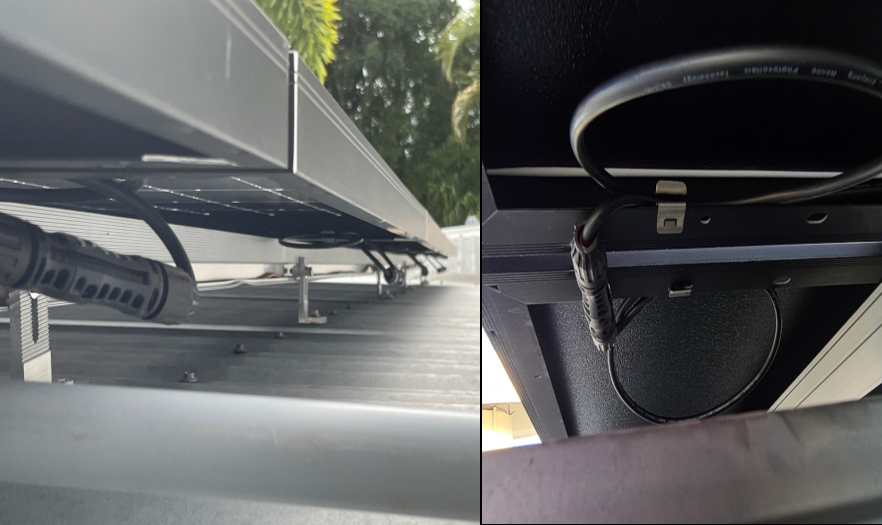
Loops in each corner of every panel to use up the excess length and then plugs hanging down. This is the default cable management which I think is crap. You can’t see here the long unsupported cable from the middle of the solar panel. As a bonus, we have a DC array cable threaded into the rail, which is especially prone to being pinched and blowing up inverters.
Some other honourable mentions were having bite marks in the frames to make clamp zones obvious, which strikes me as a good idiot-proofing measure.
Another valid point was having a pallet that doesn’t collapse when you cut the straps to begin deploying the panels. Measures like that make the difference between a consistently good delivery and a regular but irksome routine of somebody having to hold court while the rest of the team lumps panels.
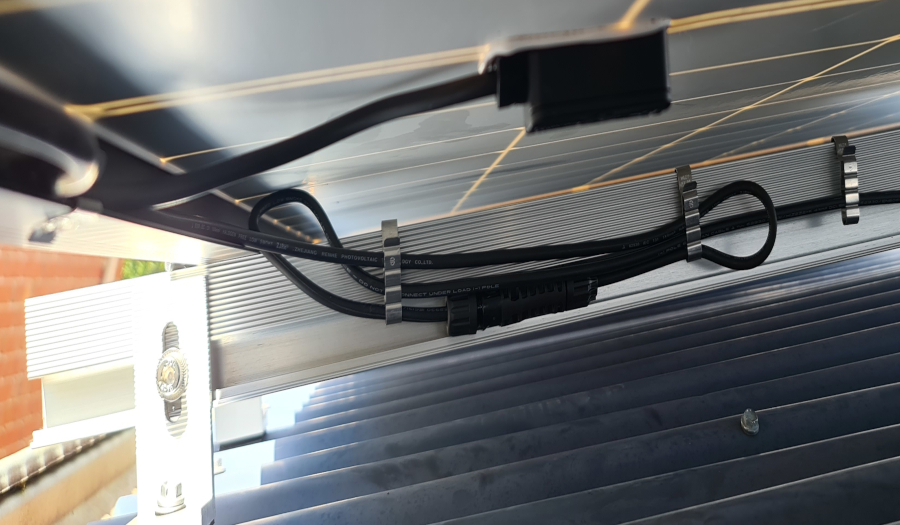
In this landscape install, the cable from the foreground junction box is clipped to the long side of the panel, then doubles back to the rail where the plug is supported. I won’t put plugs in the bottom of the panel to be drowned in a puddle.
I think solar panels need a plug fixed to the back of the module and a short lead to reach the adjacent panel. You could keep the plugs out of the weather without needing a worker who cares or any other restraints while using a range of pre-made or bespoke leads for inter-row connections.
This would save kilometres of cable on large solar farms and dozens of metres of losses on average homes. Many “farm spec” commercial and industrial panels already use short leads, but when they’re equal in length they can still sag and end up wet, in the drip line between solar panels.
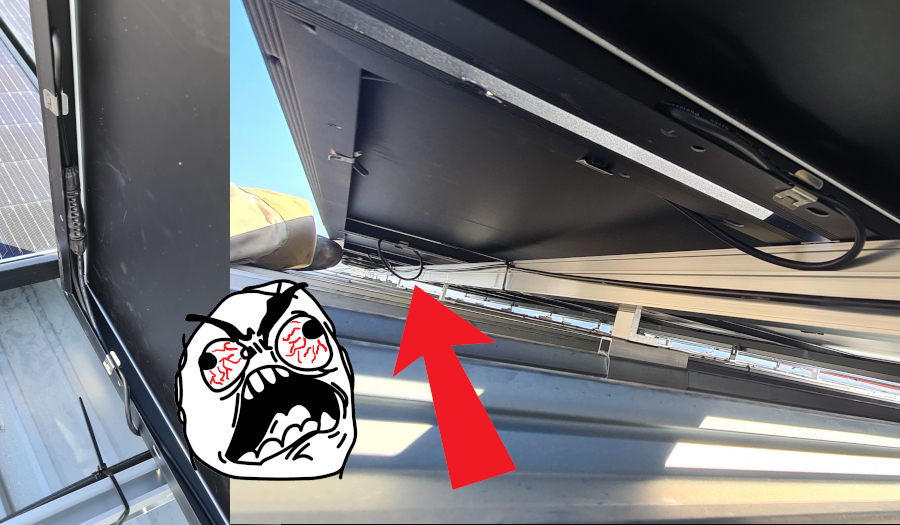
If you think about it first, you can do a neat job and still get trolled by the roof monkeys you work with.
I would also like to see a move to all-glass modules3. They’ll be heavier, no doubt, and that’s a good reason to limit panel size if we’re honest. All-glass modules are also far more durable. If we consider the lifespan solar panels should have in comparison to some of the early failures I’ve seen in EVA & mylar backsheets, then it should be something the industry embraces.
Warranty. It’s The Elephant On On Roof
Warranties have become the new race to the top for brands to try and differentiate themselves. Many people I know are uncomfortable about what is becoming a scary obligation for those running a business where the Australian Consumer Law buck stops at your small business’ door.
Like the ever-growing physical footprint, we need to re-evaluate the ever-growing warranty because it will begin to drive the best operators away. For the worst shonks it’s just marketing because they have a business plan that revolves around “going broke” in 2 years.
Those with good sustainable businesses who answer the phone for 20 years running, the ones with ethical staff, experienced professionals and expert electricians will not be willing to risk it if a bad batch of solar panels turns up 15 years after the manufacturer or importer ceases to exist.
What’s The Upshot?
If a reasonably sized panel that doesn’t weigh more than 18kg ends up being “only” 350 watts output, then so be it. Solar installers and the people who employ them are crying out for a break in the march of ever larger, heavier and more difficult modules. It’s not like house bricks have kept growing in size, have they? You need to be able to pick those up with one hand.
I would love to see some manufacturer response before any regulatory impingement, but then the coal companies haven’t driven black lung out of the coal industry.
We have to start pushing back for the sake of those doing the work. I know my back won’t handle it, and there’s no point putting solar panels on the roof if they’re only going to be damaged in the process by their own flimsy design.


 RSS - Posts
RSS - Posts



Very well said. To pick up one point, there are in fact Government agencies that have a bit to say about items being too big or too heavy …
WorkSafe says that limit is 20kg before we need 2 people to handle them. Panels over that require a 2 man lift or mechanical materials handling. Neither is especially economical on a resi install.
So they’re already too heavy to be legal with reasonable resources most installers have at hand on a typical residential installation and too big to be reasonably able to be handled.
The other item that really irks me that panel manufacturers with appalling ACL compliance are allowed to vanish and reappear a few years later and get relisted as if nothing happened.
That’s on top of stupidly long warranties on products that are a few hundred bucks a piece. I bet no manufacturer has any intent of honoring them.
Agree 100% on the points.
I would add that from a design perspective, 2m or greater panels create problems when it comes to fitting them on most roofs as the roof batten spacing limits where the racking can be located, then you end up with panel overhangs that are outside the standards or you have to leave large gaps between panels (or break the rules).
With smaller panels up to 370W or 1.8m long, you had a lot more flexibility especially on smaller roofs or roofs with complex shapes. 330W were much easier to design with because they fitted in a lot more places.
Here here Anthony – Im a consultant not an installer and actually give a crap about how it looks/fits on the roof and the larger panels might be ok for a big roof but are a bitch to fit 2 rows portrait on older style homes.
I loved working with the 330-350w modules and concur with the whole parallel string issue also makes it hard to come up with a design that works on a “tricky” roof.
Bigger is not always better
Vale Winaico 333s
Hello SolarQuotes blog.
I have a large piece of very sunny Eastern EU land and a new build, wish to install solar but not to “mess up” my planned characteristic terracotta tiled roof. So I’m thinking about solar panels erected on the ground rather than the roof. I’m hoping it’s easier to install and maintain and I don’t need a huge amount of ’em. Are there any downsides I haven’t thought of, compared to roof-erected solar panels?
Thank you